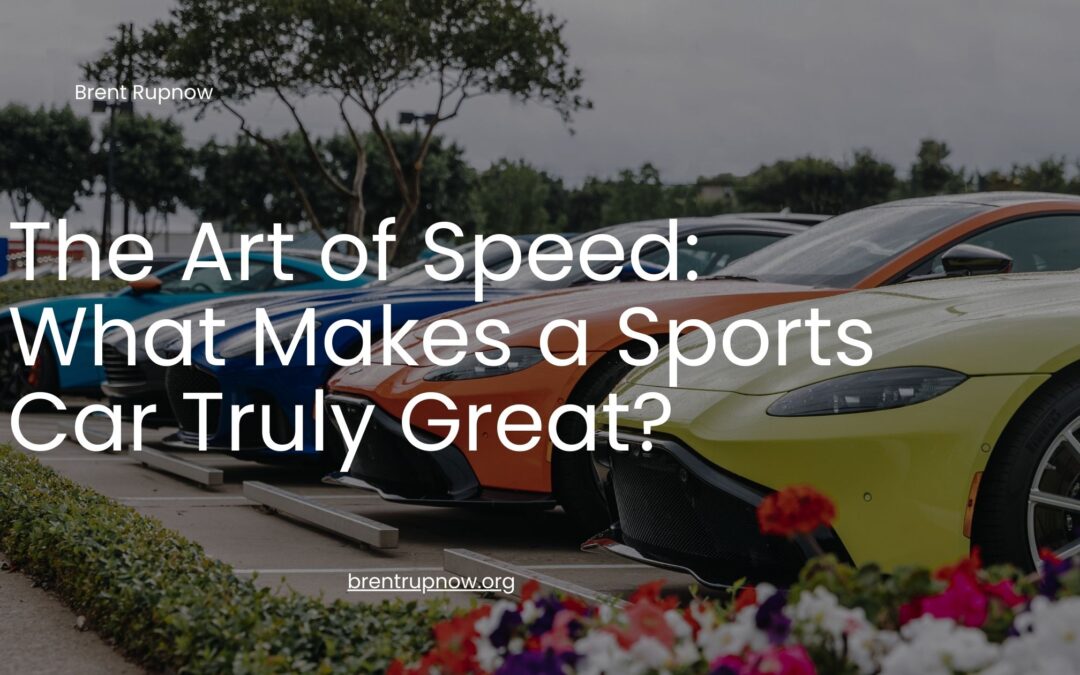Sports cars have long been symbols of speed, luxury, and cutting-edge engineering. From the roaring engines of the early 20th century to today’s high-tech hypercars, sports cars have evolved significantly. This blog explores the journey of sports cars, highlighting classic legends, technological advancements, and the future of high-performance vehicles.
1. The Birth of Sports Cars: Early Icons (1900s–1950s)
The concept of a sports car emerged in the early 1900s when automakers began designing vehicles focused on speed and performance rather than just practicality. Some of the earliest sports cars laid the foundation for what would become a global industry of performance-driven automobiles.
Classic Pioneers:
-
Bugatti Type 35 (1924) – A dominant force in Grand Prix racing, this car combined lightweight design with incredible speed.
-
Jaguar XK120 (1948) – Known as the fastest production car of its time, the XK120 set speed records while exuding British elegance.
-
Mercedes-Benz 300SL (1954) – Featuring the iconic gullwing doors, the 300SL was one of the first cars to introduce fuel injection technology.
These early sports cars were crafted with precision, emphasizing raw power and aerodynamic designs.
2. The Golden Era of Sports Cars (1960s–1980s)
The 1960s and 1970s marked the golden age of sports cars, with manufacturers producing some of the most legendary vehicles in automotive history. During this era, cars became faster, sleeker, and more refined.
Legendary Models:
-
Ferrari 250 GTO (1962) – A rare masterpiece, the 250 GTO remains one of the most sought-after collector’s cars, known for its racing dominance.
-
Ford GT40 (1964) – Built to challenge Ferrari at Le Mans, the GT40 became an endurance racing icon, winning four consecutive titles (1966–1969).
-
Porsche 911 (1964–present) – One of the longest-running sports car lines, the 911 blended everyday usability with track-ready performance.
-
Lamborghini Countach (1974) – With its wedge-shaped design and scissor doors, the Countach redefined the supercar aesthetic.
This period saw technological improvements like improved aerodynamics, better suspension systems, and enhanced engine capabilities.
3. The Rise of the Supercar (1990s–2000s)
As technology advanced, the 1990s and 2000s introduced the supercar era—vehicles with extreme horsepower, cutting-edge materials, and mind-blowing performance.
Key Supercars:
-
McLaren F1 (1992) – Featuring a central driving position and a gold-lined V12 engine, the F1 held the record for the fastest production car for years.
-
Ferrari Enzo (2002) – Named after the company’s founder, the Enzo utilized Formula 1 technology to deliver unparalleled speed and handling.
-
Bugatti Veyron (2005) – Breaking the 250 mph barrier, the Veyron redefined what was possible in terms of speed and luxury.
-
Lexus LFA (2010) – A rare Japanese supercar, the LFA featured a high-revving V10 engine and a carbon-fiber body for ultimate performance.
These cars set new standards for acceleration, top speed, and engineering excellence, paving the way for modern hypercars.
4. The Hypercar Revolution (2010s–Present)
In recent years, hypercars have pushed performance boundaries even further, utilizing hybrid and electric technology to enhance both speed and efficiency.
Notable Hypercars:
-
Porsche 918 Spyder (2013) – A plug-in hybrid supercar that combined electric motors with a V8 engine for jaw-dropping acceleration.
-
McLaren P1 (2013) – Utilizing advanced aerodynamics and hybrid power, the P1 was designed for both track and road performance.
-
Ferrari LaFerrari (2013) – With its hybrid V12 engine, LaFerrari blended extreme power with improved fuel efficiency.
-
Bugatti Chiron (2016) – The successor to the Veyron, the Chiron boasted 1,500 horsepower and a top speed of over 260 mph.
These hypercars use lightweight materials like carbon fiber, active aerodynamics, and advanced hybrid systems to achieve record-breaking speeds.
5. The Future of Sports Cars: Electric & Beyond
With the rise of electric vehicle (EV) technology, the future of sports cars is shifting towards sustainability without compromising performance.
Next-Generation Sports Cars:
-
Tesla Roadster (Upcoming) – Expected to be one of the fastest EVs, boasting a 0-60 mph time under two seconds.
-
Rimac Nevera (2022) – An all-electric hypercar with nearly 2,000 horsepower, setting new benchmarks in EV performance.
-
Lotus Evija (2023) – A fully electric hypercar focusing on aerodynamics and lightweight engineering.
As technology advances, expect even greater innovations in electric sports cars, with enhanced battery efficiency, autonomous features, and AI-driven performance enhancements.
Conclusion: A Legacy of Speed & Innovation
From the classic sports cars of the early 20th century to the futuristic hypercars of today, the evolution of sports cars reflects mankind’s pursuit of speed, engineering brilliance, and aesthetic perfection. Whether powered by roaring V12s or silent electric motors, sports cars will continue to captivate enthusiasts and redefine automotive excellence for generations to come.
